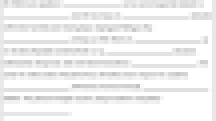Last year, an English teacher at my school came to me with an all-too-common concern about an essay a student named Kyle had just turned in. The teacher’s 10th grade class had just finished op-ed essays on a topic of their choice, and Kyle had chosen to examine the economic impact of illegal immigration on the U.S. economy. But in his submitted draft every source in his bibliography—and I do mean every—leaned toward one political bias, and sometimes quite heavily.
“It happened again,” lamented my colleague.
Despite directing the class to consult disparate points of view and guiding them to databases and websites constructed to provide point and counterpoint arguments, Kyle hadn’t shown any effort in entertaining other viewpoints. And while Kyle’s essay was the most egregious on this front, he was by no means the only one in this camp. Many students start the research process by proclaiming: “I know what I’m going to say!” and seek only sources that validate that pre-formed position.
Students were failing the most central tenet of media literacy, and turning in another set of essays reinforcing bias confirmation. In some cases, they weren’t even aware they were doing it.
“How do we help them recognize when their bias is interfering with their understanding?” my colleague asked.
As a library media specialist, I thought I knew the answer. If we only react after the fact, students often meet us with defensiveness. But there is another path. “We need to get out ahead of it,” I responded.
Confronting Invisible Bias
Perhaps the biggest challenge we face when accessing information is confronting our biases before we are able to unpack the opinions and insights of other people. Often these biases are unconscious or implicit, meaning we might not even be aware we have them.
But these implicit biases have real implications, and educators are no less immune than students. Research has already shown, for instance, that adults see black girls as less innocent than white peers, even before they meet them. Another study found that white teachers were 30 percent less likely than black teachers to predict a black student of theirs would graduate college.
Until we become aware of our biases, and how these attitudes and opinions emerge through the language we use, we can fall into what’s known as the bias confirmation trap—we see opinion with which we agree as fact and information with which we disagree as false.
Nurturing self-awareness in our students and guiding them to see how their biases interact with their information acquisition is a fundamental element to helping them develop the media literacy and communication skills essential for civil discourse. Academics and educators like Robin DiAngelo, author of “White Fragility,” challenge us with their findings to grow the self-awareness necessary to promote cross-racial dialogue and foster socially just schools and communities.
Sounds daunting, right? Maybe not. Bias is a part of any source of information; the issue is the degree of transparency. When a text is laden with super-charged words and images, the bias is obvious. When the language is more subtle, we are more inclined to miss it. So when working with my students, we tackle the subtle texts. The experience with Kyle and his classmates prompted a new realization for us. Before we tackle the texts, we have to face ourselves. So I developed a lesson I hoped would make that clearer.
Creating Room for Debate
Since students were already working with op-ed essays, I curated some models of well-written ones on topics I thought would be meaningful to the class. To do that, I consulted one of my go-to resources for editorial content, the New York Times “Room for Debate” section and found a collection of short opinion essays on equity in education. I selected one by Prudence Carter.
From her essay I excerpted one paragraph that, to me, seemed particularly potent. From that paragraph I removed some of the descriptive words: verbs and adjectives, mostly. When I distributed the document to a class, a student immediately asked:
“Are we doing Mad Libs today?”
Here is what the exercise looked like:

Admittedly, it does look like Mad Libs, those fill-in-the-blank joke sheets we loved as kids. That was intentional—so that students would have a basic sense of what they were supposed to do. But this exercise is a little different. First, the goal is to make the paragraph cogent, to choose words that make sense in context. And second, they needed to do it alone, without discussion. (If you have a moment, feel free to follow along and add your own words.)
The class buzzed through the first two blanks, easily completing the ideas. With the third blank they started to slow down. Some started to struggle. They asked questions like, “Can I use a phrase instead of a word?” I said a short phrase was OK, but that all that had been removed in each blank space was one word. The goal, I told them, is to get the paragraph to make sense, not guess what the author said.
When most of them had finished, I said it was time to move to round two: partner work. I directed them to work in pairs or groups of three. This time they needed to discuss the task and agree on the words that filled each blank. Again, they cruised through the first few, easily agreeing about what the missing words could be. And then it got harder.
As students began to find differences in the words they were using, they started trying to convince each other why their word was better. When completing the statement: “Equitably funded schools run by ___ educators,” some students chose the adjective “qualified” and others chose “passionate” and still others chose “caring.” Organically, they were discussing the subtle connotations of language. Some groups got really stuck and had to skip some parts; others put two words in a spot and then discovered that how they completed the next blank was dependent on which word they chose for the previous one.
Rarely can I say that experiences I plan for my students go exactly how I anticipate. This one did. These students—many of whom had been classmates for years, who lived in similar neighborhoods and took multiple classes together—were starting to see that language impacts meaning, and that their choice of words indicated subtle and even unconscious beliefs. Those they may have presumed viewed the world just as they did actually had different points of view, and—this is important—things they thought were fact might actually be opinion. Students had picked up on all this and we hadn’t even gotten to the best part of the lesson.
Next, I asked the students to focus on one sentence from the paragraph:
“they _____________ to keep up, while others are ____________ up on elevators.”
and share how they completed it. Here are some examples from the students.
they struggle to keep up, while others are racing up
they try to keep up, while others are rising up
they attempt to keep up, while others are moving up
We drilled into their words starting with “struggle,” “try” and “attempt.” “What do these words imply? What do these words say about the people doing the action?” I asked them. The students observed that these words insinuated difficulty, obstacles and likely failure. Some thought they conveyed a lack of will or commitment to the task. Ultimately, they agreed that these words implied a lack of agency.
Then we focused on the second words: “racing,” “rising,” “moving.” Here the students noted progress, accomplishment, success and action. Certainly the way the statement was completed gave the “others” power and agency that the “they” in the sentence did not have.
Of course the final step was to compare their word choice with the original author’s:
“they work to keep up, while others are zooming up”
“Whoa,” said one student.
“That’s really different,” said another.
I invited them to explain why.
Carter, the original author, actually gives agency to the people my students described as “struggling,” “attempting,” and “trying.” Not only did she give them agency but by saying “they work,” she implies that they have skill, purpose and goals. And by describing others as “zooming” she implies privilege. And there, in that one phrase, is material for a substantive and meaningful discussion of implicit bias.
Kyle and his class took home a lesson about how our place, our upbringing, our background and our media exposure contributes to our world view. Unless we confront the bias, we can not overcome it.
Making a Conscious Choice
If we consider the language we have used to tell our history and we choose to use different words, we are inviting different points of view into our understanding of the world; we are broadening our perspective and gaining empathy with diverse people.
I have replicated this “Mad Libs” lesson many times with both students and adults. No one has ever completed the sentences the way Prudence Carter originally wrote them. Every time I guide people through this lesson, the conversation about the role bias plays in our lives and our learning is deep and thoughtful.
Some people are struck by the need to read completely—not just skim a headline or abstract in a media feed. Others notice how limiting it is to describe an issue as binary, as in having only two sides. And still others realize that bias is inherent in all of us. For everyone, what resonates is the implicit weight of words.
The cool thing, to me, about this lesson is that the same people can do it over again with a different text and continue to learn about themselves and how their unconscious and implicit biases affect their worldview, slowly stripping out ingrained habits of bias confirmation. And then, they can consciously choose to expand their perspective.


